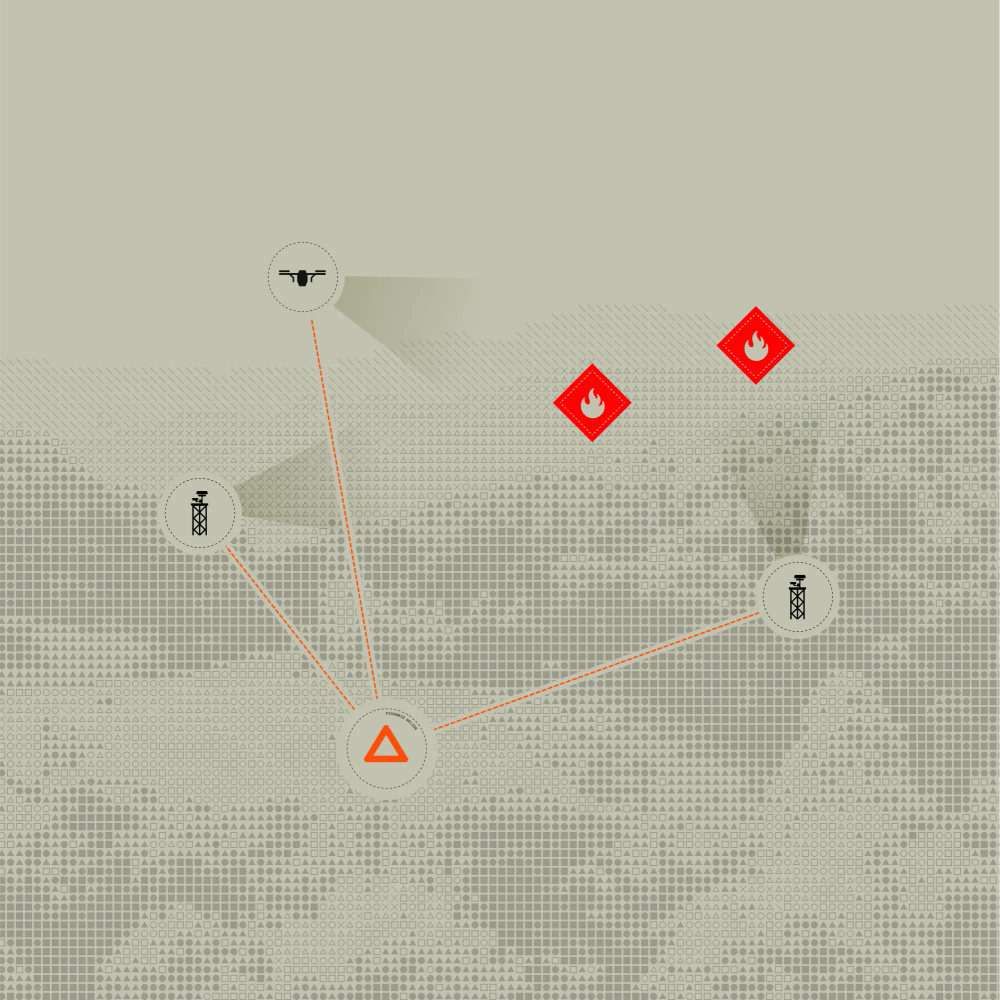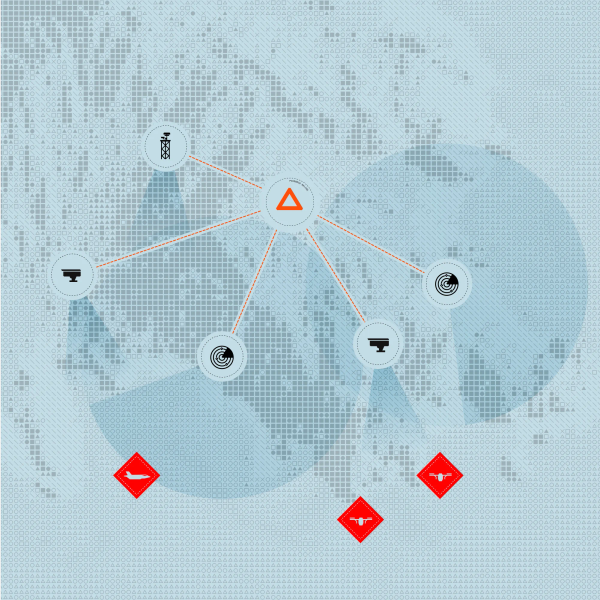
Wildfire Intelligence
Unify sensors and drones into a real-time system for faster wildfire detection and coordinated response.
Defense
Unify vendor-specific air defense assets into a fast, integrated operational picture without falling into stovepiped systems.

The Golden Dome initiative aims to build a nationwide missile defense architecture capable of detecting, tracking, and intercepting advanced threats—including ballistic, cruise, and hypersonic missiles. But as the system grows to include more dispersed sensors, interceptors, and communication nodes across air, space, and ground, a key challenge emerges: How do you integrate these assets into a single operational picture that enables fast, autonomous response—without locking into a single vendor or platform?
The fragmentation seen in base defense and ISR systems applies here as well. Air defense assets—from mobile radars to interceptors—are often built by different companies, managed through stovepiped interfaces, and deployed in isolated mission environments. Without a unifying platform, decision-makers face delays, incomplete data, and reduced effectiveness in layered defense.
Picogrid provides a platform built to integrate dispersed defense systems into cohesive, autonomous operations. Our Legion software and field-ready edge node hardware enable real-time data fusion, cross-vendor interoperability, and machine-speed tasking across air, ground, and space assets.
We don’t replace radar or interceptor systems, we connect them. By standardizing interfaces, synchronizing sensor data, and enabling automated responses, Picogrid helps the Department of Defense achieve layered, modular defense without sacrificing speed or control. Our platform can be deployed on tactical edge nodes, hardened infrastructure, or secure cloud environments—making it ideal for both CONUS and forward-based Golden Dome sites.
Picogrid is already operational across more than a dozen U.S. military installations and expeditionary sites, integrating force protection sensors into a unified operational picture. In these environments, we detect thousands of threats and process over 3 million data points daily through AI-enabled pipelines.
